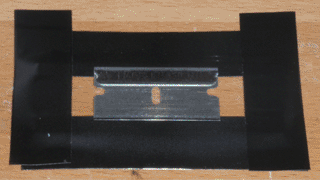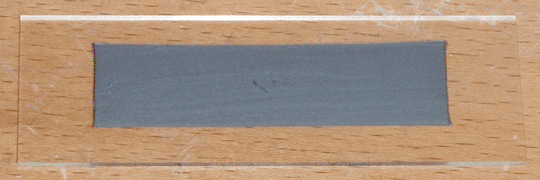

For most of my copper oxide solar cells, I have been using a commercial silver-based paint to form the back contact. This works well for prototyping, but it has a number of problems which make it unsuitable for long-term use. First, the paint only adheres weakly to glass, and easily flakes off with gentle abrasion. Second, it uses silver, which is a relatively expensive material. Finally, it uses an organic binder, which would likely degrade over time if exposed to direct sunlight. To resolve all of these issues, I made a conductive paste from graphite and sodium silicate.
Sodium silicate is a useful inorganic adhesive; it typically comes as a 40% solution by weight, which is a syrupy liquid that dries in air to form a hard clear glass. It adheres to most materials, but bonds especially well to glass and metal oxides, making it a perfect choice for use in my solar cells. To make a conductive paste, I simply added drops of this solution to a few grams of micronized (5µm) graphite powder while stirring, until it had the consistency of peanut butter. This paste can then be spread with a razor on glass substrates, using pieces of tape along the edges to set the thickness of the layer. It dries quickly and forms a hard, durable surface, which does not lose any graphite when rubbed or scratched. The dried paste is reasonably conductive; the slide at the top of the page has a coating that is 0.006" thick, resulting in a sheet resistance of roughly 7 ohms per square, or 22 ohms end-to-end. Furthermore, since both of the ingredients are inexpensive, thicker layers can easily be prepared if higher conductivity is necessary.